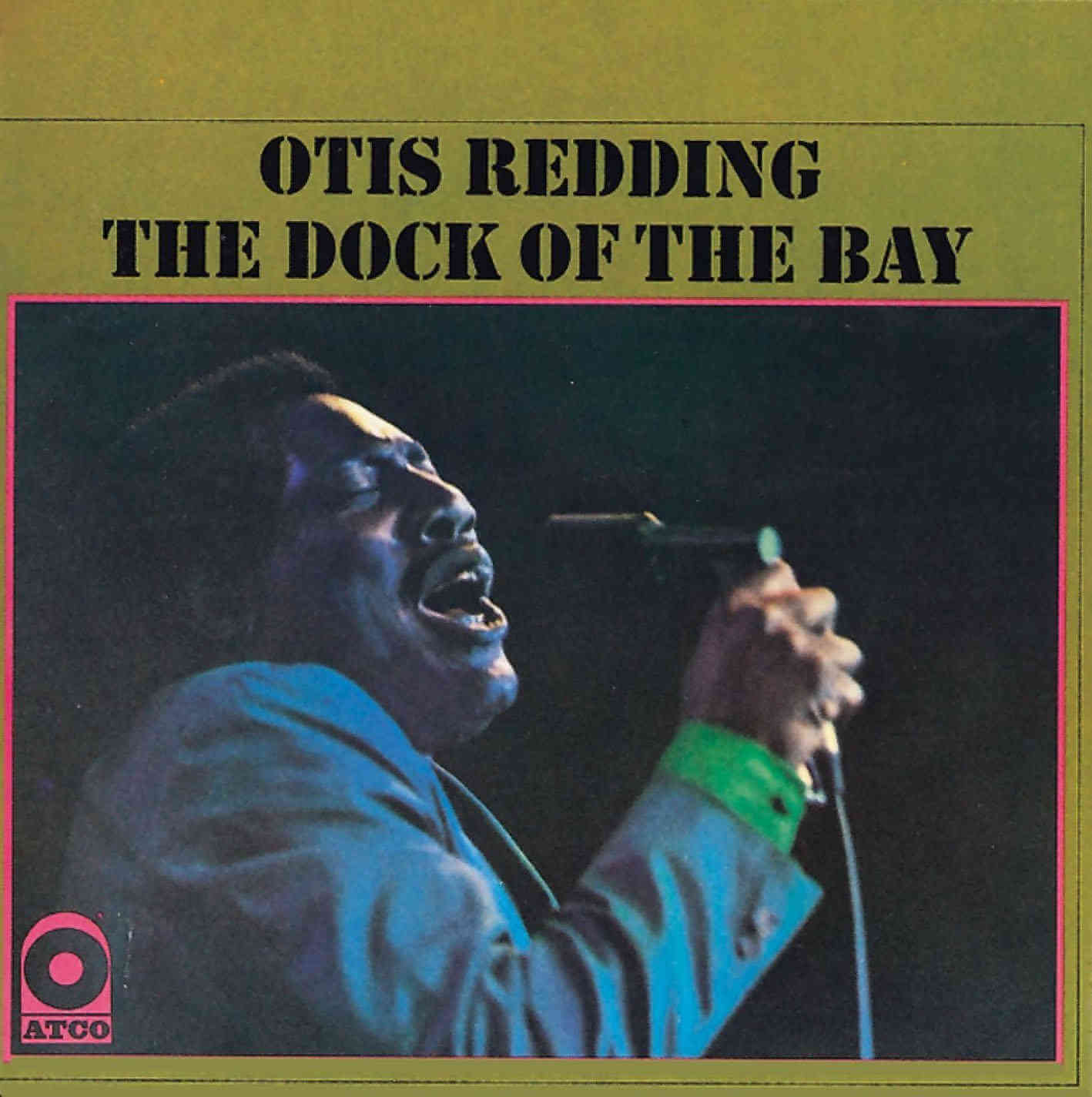
Sit in the mornin’ sun when you hear this album. Play it till the evenin’ comes.
When I first heard“(Sittin’ On) The Dock of the Bay,” I was a child listening to it on Friday night oldies radio when me and my best friends were supposed to be sleeping. The fact that all these years later, essentially 2,000 miles we roamed to now live across the bay from where Otis Redding wrote, “(Sittin’ On) The Dock of the Bay,” isn’t lost on me.
Oh, yeah, it’s an album, too. I’ll warn you, the other songs on this album aren’t as good as the song “(Sittin’ On) The Dock of the Bay,” but few in history are.
The Dock of the Bay shortcuts:
“The Dock of the Bay” is the first album released after Otis Redding passed (December 10, 1967). What you will find are a few remaining gems held over the last recording sessions Redding & Cropper snuck in between heavy tour dates. The forthcoming album already had a heavy buzz about it thanks to Redding’s groundbreaking performance at the 1967 Monterrey Pop Festival. His death just created a fever pitch. The fusion of the song, other gems, and the buzz generated his first #1 song in the US pop charts. It’s the damnedest of all shames he wasn’t on earth to witness it.
Time to make this dock our home:
Album Details
Album Specs
- Released: February 23, 1968
- Where Recorded Stax Records. Memphis, TN. Mostly.
- Record Labels: Stax / Atlantic / Rhino (current. By Time / Warner – manufactured and marketed)
- Produced by: Steve Cropper
- Album Peak Chart: #1 UK Album Chart. #4 on Billboard Top LPs. #1 on Billboard Hot R&B LPs.
- Notable Musicians (to me) Included: Donald “Duck” Dunn, Isaac “Shaft” Hayes, Steve Cropper
- Notable Reviews: AllMusic: 5/5 stars. Rolling Stone: Favorable.
- Top Single: “(Sittin’ On) The Dock of the Bay,” #3 UK Singles chart, #1 US Billboard Hot Rhythm & Blues Singles, #1 US Billboard Hot 100. “I Love You More Than Words Can Say,” #30 US Billboard Hot Rhythm & Blues Singles, #78 US Billboard Hot 100. “The Glory of Love,” #19 US Billboard Hot Rhythm & Blues Singles, #60 US Billboard Hot 100.
Song Listings
Side One
- “(Sittin’ On) The Dock of the Bay” : Written by Otis Redding & Steve Cropper
- “I Love You More Than Words Can Say”: Written by Eddie Floyd & Booker T. Jones
- “Let Me Come on Home” : Written by Booker T. Jones & Otis Redding
- “Open the Door” : Written by Otis Redding
- “Don’t Mess with Cupid” : Written by Steve Cropper, Eddie Floyd, and Deanie Parker
Side Two
- “The Glory of Love”: Written by Billy Hill
- “I’m Coming Home (To See About You)”: Written by Otis Redding
- “Tramp” : Written by Lowell Fulson & Jimmy McCracklin
- “The Huckle-Buck” : Written by Roy Alfred & Andy Gibson
- “Nobody Knows You (When You’re Down and Out)” : Written by Jimmy Cox
- “Ole Man Trouble” : Written by Otis Redding
On Spotify
Each Song (to me)
Side One:
“(Sittin’ On) The Dock of the Bay”
It’s the song that’s been reminding me that shit gets other folks down, too, and that it’ll be okay. Somehow. If it matters. I study Otis Redding because of this song. What else can one say?
You won’t find another Otis Redding song in the same scope, style, and arrangement as “(Sitting On’) The Dock of the Bay.” It simply ain’t there. That soulful, melancholic wonder was the only time he really got existential with anything other than a woman…or women.
Steve Cropper recently discussed “(Sittin’ On)” The Dock of the Bay,” on the Ronnie Wood should on YouTube.
“Wait?” Ronnie Wood of The Rolling Stones has a YouTube show?”
Yeah. And it’s pretty good.
Cropper discussed the steps that went into co-writing and producing the gem. My favorite moments included:
- “Crop’,” he said. “Get your ‘gut-tar.’ Get your ‘gut’tar. I got a hit.”
- Otis Redding started writing “(Sittin’ On) The Dock of the Bay” on Bill Graham’s houseboat in Sausalito, CA.
- “I remember the fish & chips bar over there.” – Ronnie Wood, about Sausalito, CA
- Otis Redding only ever heard Cropper’s acoustic guitar play on the song.
- Steve Cropper overdubbed the electric guitar the Friday night before Redding was killed. Redding died that Sunday afternoon.
“I Love You More Than Words Can Say”
I could see new fans buying this album and going, “this doesn’t sound like “Dock of the Bay.” Folks are funny like that.
This is a standard, wonderful Otis Redding Stax soul ballad. Simple and confessional with a subtle build up throughout. If you don’t like it the first time, give it a couple tries. It’ll grow on you.
“Let Me Come on Home”
The hidden gem of this album. Classic grit, grime, and groove Stax soul song. It’s that mid-range tempo song that keeps it in a hip-swaying gear. Not too fast not to couple’s dance to, not too slow that it loses momentum.
“Open the Door”
The, perhaps, intended part two of “Let Me Come On Home.” This sounds like the type of next-step a guy goes to when his attempts to reconcile with his lady by being charming, but failing miserably. Straight desperation and confession – pleading to whatever crime necessary in order to be forgiven.
“Don’t Mess with Cupid”
This sounds like part 3 of “Let Me Come On Home.” This is the warning of what will happen if they don’t reconcile: Throw charges, accusations, and show he’s not only to blame. Otis is such a boy sometimes. Though, admittedly, some of my favorite lyrics, ever, come in this chorus:
“Don’t you mess with cupid, no, no /
– Otis “Cupid” Redding
Cupid, he’s not stupid.”
Side Two:
“The Glory of Love”
A ballad to start an album side. Grrr. Well, at least this one builds up like “Try a Little Tenderness.” Not nearly as emphatically, but enough to get your toe a’tappin’. Good little ballad.
“I’m Coming Home (To See About You)”
A little Cropper & Memphis Horns intro. A little Stax soul standard groove. Otis plays off a classic lullaby in the core of his lyrics:
“Hush, darling, and don’t you cry
I’m coming home to dry your weeping eyes.”
The best part of this Strax soul song is the pick up and jam-type feel at the end of this song. It really pulls it together.
“Tramp”
Here comes the cobbled-together part of the album. “Tramp” was previously released as a single. In fact, it’s the same Otis & Carla duet found on “King & Queen.” It sounds a little out-of-place here. Different textures and sound.
“The Huckle-Buck”
This is a cover of a late 1940s dance craze. It was covered all over the place, from Tommy Dorsey (without the “A”) to Canned Heat. According the Wikipedia sources, the sound was originally influenced by the Charlie Parker tune, “Now’s the Time.” Parker’s band members during this recording included Dizzy Gillespie and Miles Davis.
“Nobody Knows You (When You’re Down and Out)”
If you’ve listened to “The Soul Album,” then you’ve heard this cover. It still sounds great but that haunting sensation started to pour into me. It was the realization that new, unheard Otis Redding material was becoming a rarer and rarer thing.
“Ole Man Trouble”
Helluva choice to finish the album. If you’re going to finish off an album with material to introduce to new audiences, one that has anywhere the look and feel of “(Sittin’ On) The Dock of the Bay,” this wouldn’t have been my choice. Once again, back-seat driving nearly 50 years after the fact, but this, too sounds out-of-place with the rest of the album. I mean, good song off of Otis Blue. Sounds better live.
Maybe it was a prayer to Ole Man Trouble to bring Otis back to them. On that, I would agree, and plea, and do anything possible as well.
Overall
I felt like an asshole reviewing this album. How do you get on anyone for anything regarding this album? Otis’s death was recent, overwhelming, and unexpected during this album’s production. No one expected that phone call on that Sunday afternoon in December. They were planning an album, not a funeral.
I can’t imagine what Steve Cropper was going through to get this album out. It must have been daunting to see the buttons and dials on the panels through all those tears, trying to move on from Otis’ death while hearing his voice 16-20 hours a day haunting everyone through the speakers. It had to be impossible to be objective in order to get his last “hit” song just right, a version Otis never even had a chance to hear. Nerves of steel, no matter if and what medication was used to keep them steady.
No, “The Dock of the Bay,” wasn’t Otis’ best album. He wasn’t there to record half of it. It wasn’t one of Redding’s Stax soul album. It took me a few tracks to realize where Cropper was going with this album, but I think I got it: If this feels a little like “Pain in My Heart,” both poetically and historically, it’s probably because this was, in a sense, Otis Redding’s first album all over again. “The Dock of the Bay” was an invitation to new fans hearing about Otis for the first time for the saddest of reasons. This was Cropper’s and Stax’s last chance to cement Redding’s legacy for posterity, and the track listings reflect it: Something old, something new, something borrowed, and everything blues & soul. They were working without a net, without a chance to heal, without time to waste, and without additional resources. Otis wasn’t coming back through that door, as much as we throughout the ages hoped otherwise.
And that generations later like me are still studying Otis Redding is a testament to what Cropper and Stax were able to do at this crossroads. As “(Sittin’ On) The Dock of the Bay” would put on display, Otis Redding truly saved his best for last.
If only it didn’t have to be.
What do you think of “The Dock of the Bay?”
Sources included:
- My damn-nearing accurate Otis Redding Discography
- OtisRedding.com
- Rhino.com
- Wikipedia
- Album liner notes and oldies radio




Leave a Reply
You must be logged in to post a comment.